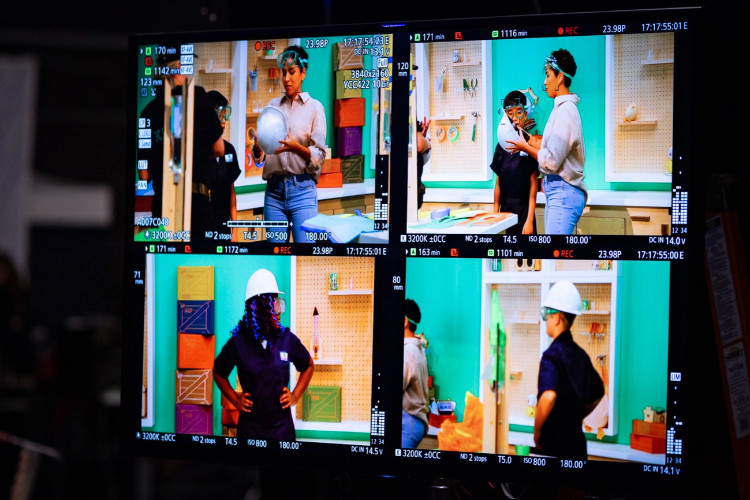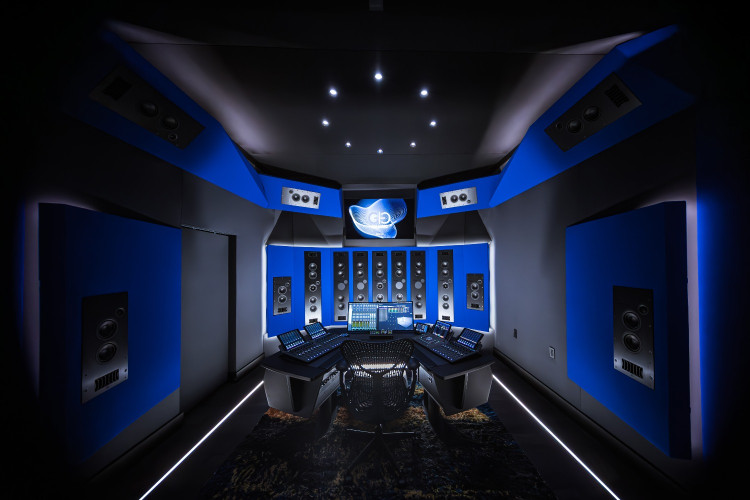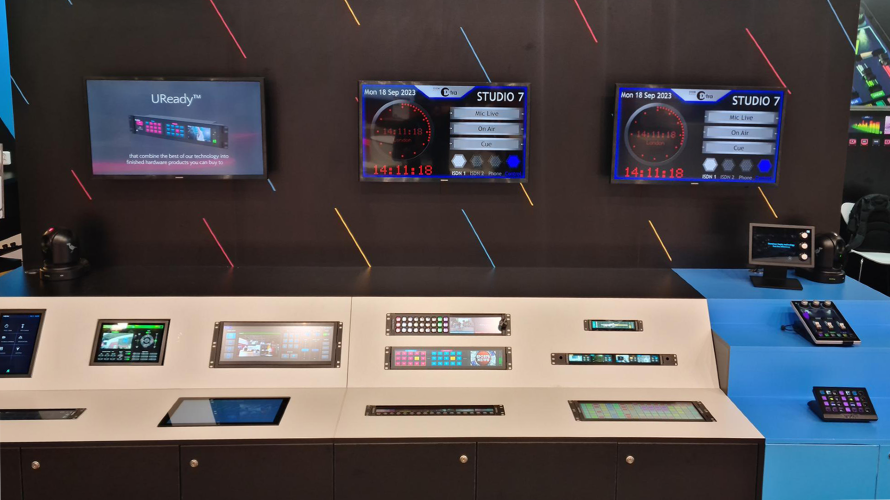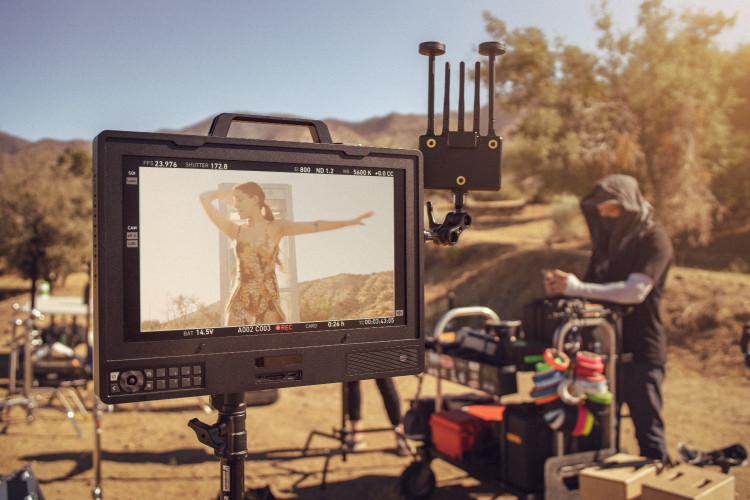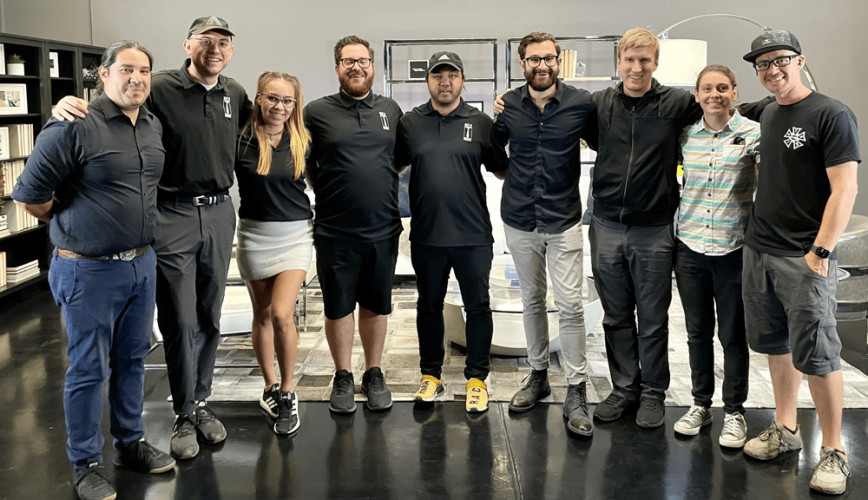Eye to Eye: Video monitoring and displays

Author: Bob Pank#
Published 1st August 2010
Given a decent stereo audio source and a pair of headphones, it is quite easy to imagine that you are actually attending a live performance. Not so with video; human eyes are much more demanding. Fortunately picture display technology is developing very quickly and along many different routes.
OLEDs
LED-backlit LCDs were about the best screens available when they came down to respectable price levels in 2008, since when they have become so competitively priced that they are completely ousting traditional LCDs. Now LED-LCDs are facing potential competition from OLED (organic-light-emitting-diode) screens as these in turn become available at affordable prices and in reasonably large sizes.
Traditional LCD screens consist of a filter panel which does most of the work but which needs a light source. Until recently, the backlighting was delivered from bulky fluorescent tubes but increasingly now from more compact and more robust LED sources. OLED screens generate their own light, pixel by pixel. Plasma screens do the same but at very much lower efficiency and with a notable tendency to suffer from 'burn-in'. A good example of OLED technology is TV Logic's TDM-150W 3D-capable 15 inch monitor. Exhibited at the 2010 NAB show in April, the TDM-150W's active components are only a few millimetres thick.
A complication with OLEDs is component ageing which results from using organic compounds.
Du-Pont is currently working on an OLED screen production process that is claimed to deliver lifetimes of 29,000 hours for red pixels, 110,000 hours for green and 34,000 hours for blue, at typical television brightness levels.
OLETs
Organic light-emitting transistors (OLETs) offer the compactness of OLEDs plus potentially greater efficiency and therefore higher light output. Recent demonstrations by the Institute for Nanostructured Materials (Bologna, Italy) and the Polyera Corporation (Illinois, USA) achieved efficiencies of 5% compared with equivalent OLEDs which had efficiencies of just 0.01%. highest reported efficiency for OLEDs based on fluorescent emitters is 2.2% but researchers have recently reported achieving around 20% efficiency from OLEDs based on phosphorescent emitting material.
Direct-view 3D displays
Microsoft's Applied Sciences Group has demonstrated a stereoscopic 3D display that projects different images to a viewer's left and right eyes, eliminating the need for eyewear. A camera tracks viewers eyes and guides a lens that steers light directly into each eye by switching LEDs along its bottom edge on and off. The LEDs shine light into the back of the lens at a measurable position and angle. This determines how the light bounces and at what angle it escapes the lens. By replacing the traditional backlight in an LCD TV, the thin lens can turn a 2D display into a 3D display. The display can project images to two viewers simultaneously within a 20-degree viewing angle.
Sony showed at the DC Expo in Tokyo (October 2009) an experimental direct-view 3D display in a cylinder roughly the size of a domestic coffee-pot. The cabinet measured 27 cm high and had a 13 cm base diameter tapering to about 11 cm. Actual image resolution was 96 x 128 resolutions, based on an LED light source and viewable from any horizontal angle. Larger versions are anticipated. The company has a healthy tradition of exploring many different technologies so don't automatically assume that this one will actually come to market.
Hybrid monitor/PCs
Samsung's new EX series 1920 x 1080 LED displays include the option of a built-in PC. This is quite an attractive idea for many applications, particularly given the increasing popularity of viewing television content via the internet. Available in 40 inch, 46 inch and 55 inch sizes, the EX displays are claimed to be suitable for use as public-area information-displays. Refresh rate is 120 Hz.
Flexible displays
One of the strangest displays developed to date is direct-view video paper. This has already proved popular in devices such as the which has two substantial advantages over traditional backlit displays, being readable in direct sunlight (try that with an iPad!) and requiring relatively little electrical power.
Last September, US-based publication 'Entertainment Weekly' carried what is claimed to be the first video advertisement to appear in a paper magazine. Produced by CBS, the promo took the form of a paper-thin video screen about the size of a mobile phone display, driven by a thin-film video processor and controllable via five pushbuttons. The impact this had on sales of 'Pepsi Max' is not reported.
Hewlett Packard has demonstrated a prototype flexible electronic display which is claimed to be much more robust and more economical than conventional video and computer displays. The 'unbreakable' displays were created in co-operation with the Flexible Display Center (FDC) at Arizona State University using self-aligned imprint lithography (SAIL) technology invented at HP's central research arm, HP Labs. SAIL is claimed to be 'self aligned' because the patterning information is imprinted on the substrate in such a way that perfect alignment is maintained regardless of process-induced distortion. SAIL technology enables the fabrication of thin film transistor arrays on a flexible plastic material in a low-cost, roll-to-roll manufacturing process. This allows for more cost-effective continuous production, rather than batch sheet-to-sheet production.
One aspect of thin flexible display devices video paper that can be safely ignored for obvious reasons is their capability of being rolled or folded.
Wearable displays
The video equivalents of headphones are taking a remarkably long time to develop into serious products even though they offer an obvious route to immersive television and computing. They have the potential to be much cheaper to transport than conventional displays, far lighter on energy consumption and ideal for shared working environments. Probably also potentially cheaper to manufacture. An example, due on the market this year, is NEC's 'Tele Scouter' which centres on a wearable computing device and a remote server. It is controlled via eye movements using retinal scanning which appears to add significantly to the cost and would be the very last thing a live-broadcast operator would want to risk. One wrongly-timed eye-flick and you could be off-air.






